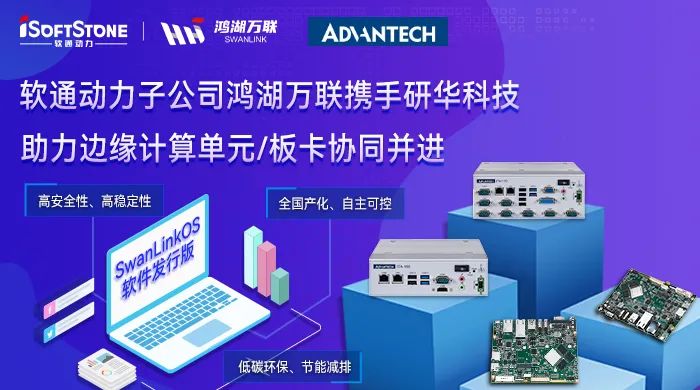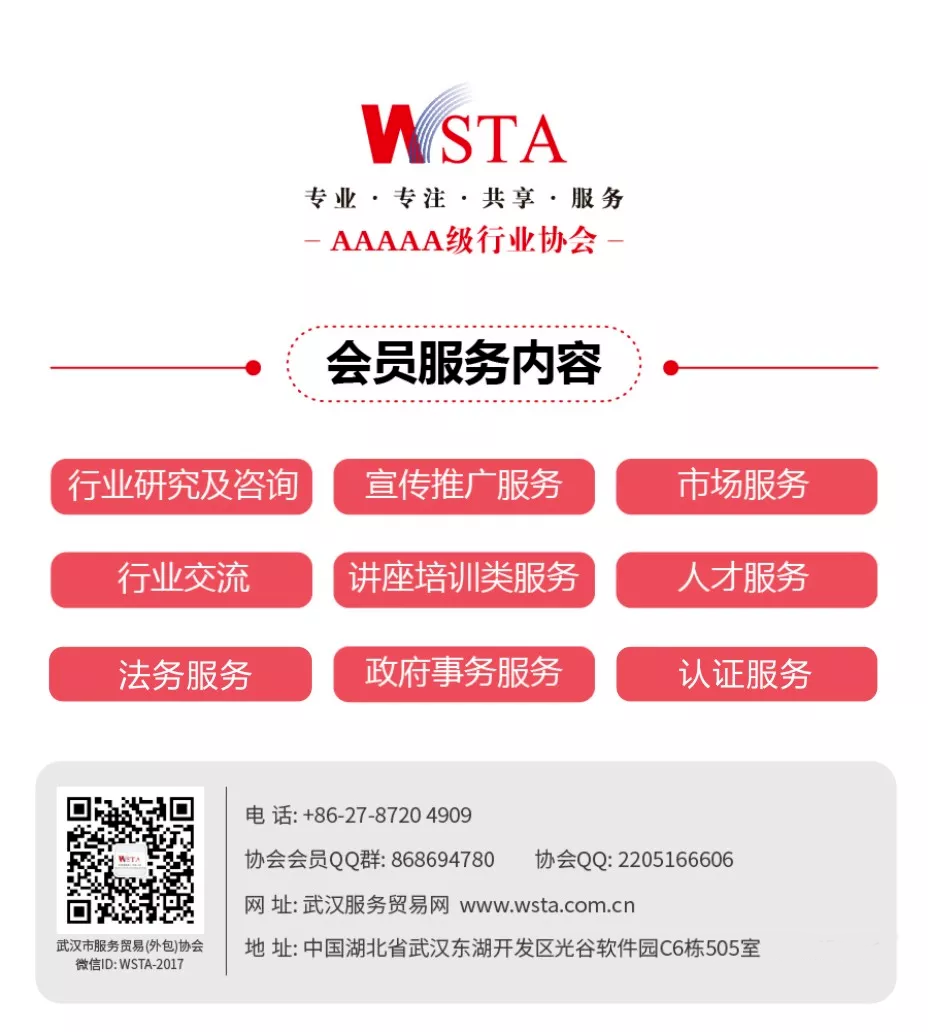

How did Honghu Wanlian, a subsidiary of Softcom Power, make SwanLinkOS stand out among many open-source embedded operating systems and gain the favor of Advantech? What pain points in industrial application scenarios will SwanLinkOS address? Can the collaboration between the two parties yield a “1+1 greater than 2” effect?
With the national “14th Five-Year Plan” highlighting “accelerating digital development and building a digital China,” the term “open source” has been included for the first time. Various industries are actively embracing the open-source ecosystem. Recently, Honghu Wanlian (Jiangsu) Technology Development Co., Ltd. (hereinafter referred to as “Honghu Wanlian”), a subsidiary of Softcom Power, and Advantech Technology (China) Co., Ltd. (hereinafter referred to as “Advantech”) completed mutual certification of their domestically produced IoT edge computing units ITA-160/170 and single-board computer RSB-4710, both of which are equipped with the SwanLinkOS software distribution based on OpenHarmony developed by Honghu Wanlian.
During the system testing and validation process by Advantech’s testing team, the SwanLinkOS platform demonstrated the ability to quickly build commercial applications, with system stability and performance meeting the requirements for commercial promotion.
“Favorable Timing, Geographical Advantage, and Harmonious Relations” Behind the Collaboration Between Advantech and Honghu Wanlian
If one were to describe the collaboration between Honghu Wanlian and Advantech in one sentence, it would be “favorable timing, geographical advantage, and harmonious relations.”
Advantech’s Industrial IoT Business Group General Manager Cai Qinan stated, “Favorable timing” refers to alignment with national policies and industry trends. Founded in 1983, Advantech has always focused on three major markets: industrial IoT, embedded IoT, and smart cities. In the context of the trends of IoT, big data, and artificial intelligence, Advantech proposed IoT hardware and software solutions centered around edge intelligence and industrial cloud platforms, while closely following the wave of domestic substitution, partnering with excellent domestic chip and operating system manufacturers to build domestic hardware and software solutions.
With the development of industrial IoT, open-source and domestic substitution have become trends, and Honghu Wanlian’s product direction aligns with this trend. Honghu Wanlian’s CTO Ye Yuping also stated that both the international and domestic environments indicate that the autonomy and controllability of operating systems are the way forward. “Why has the collaboration between Honghu Wanlian and Advantech been relatively smooth? Because we are strategically aligned,” Ye Yuping said, emphasizing that “strategic alignment” is the foundation of their collaboration.
“Geographical advantage” refers to the proximity of their locations. Honghu Wanlian’s parent company, Softcom Power, is headquartered in Beijing, which is very close to Advantech’s Beijing branch, allowing for frequent interactions. In May 2022, Honghu Wanlian established its headquarters in Wuxi, partly due to the advantages of Wuxi’s IoT industry cluster, and also because it is very close to Advantech’s R&D and manufacturing centers in Kunshan.
“Harmonious relations” refer to the complementarity between the two parties. For Advantech, with the help of Honghu Wanlian, it can expand the number of connections for its existing products in different scenarios, helping to grow its market. For Honghu Wanlian, promoting the operating system relies on hardware support, and Advantech’s equipment in the industrial control field accounts for 41% of the global market, making it a global leader in this field, which can help SwanLinkOS quickly penetrate the market. The two parties will continue to launch more self-controlled products and industry solutions based on open-source Harmony, working together to serve industry partners and contribute to the country’s digital industry construction.
So, what exactly are the self-controlled products based on open-source Harmony that Advantech focuses on hardware while Honghu Wanlian focuses on software? Among the many open-source systems, what are the characteristics of SwanLinkOS?
The Foundation and OpenHarmony
To discuss the collaboration between Advantech and Honghu Wanlian, we must first introduce what open-source Harmony (OpenHarmony) is.
OpenHarmony is an open-source project incubated and operated by the OpenAtom Foundation, aimed at building a framework and platform for intelligent terminal device operating systems in an all-scenario, all-connection, and all-intelligent era through open-source methods, promoting the prosperous development of the Internet of Everything industry.
According to the foundation’s official website, the foundation accepted the donation of foundational code for intelligent terminal operating systems from Huawei in September 2020, subsequently open-sourced it, and named the project OpenAtom OpenHarmony (referred to as “OpenHarmony”). As a platinum donor of the OpenAtom Foundation, Softcom Power has actively participated in the co-construction of the OpenHarmony project from its inception, playing an important role in the technical research and development of OpenHarmony and the construction of its service ecosystem. Honghu Wanlian is a subsidiary of Softcom Power focused on operating system research and industrialization services, dedicated to the development of intelligent IoT operating systems based on the OpenHarmony open-source system; based in Wuxi, it radiates nationwide, focusing on vertical industry fields to create value for customers and enable various industries, promoting the realization of a connected world.
So what exactly is Honghu Wanlian’s SwanLinkOS?
Under the guidance of the OpenAtom Foundation, Honghu Wanlian, as a professional operating system service provider, enables the development of the OpenHarmony ecosystem and industry, aiming to make SwanLinkOS the preferred brand in the industry.
According to Ye Yuping, Honghu Wanlian focuses on three major business segments and six major business categories, customizing commercial distributions based on the OpenHarmony system—SwanLinkOS—for multiple industries, helping Honghu Wanlian build a perception, intelligent connection, and innovative all-scenario IoT ecosystem.
The SwanLinkOS commercial display distribution and transportation distribution released by Honghu Wanlian have undergone capability upgrades and research innovations in terms of system kernel, system framework, and performance optimization, and have passed OpenHarmony compatibility testing.
The SwanLinkOS commercial display software distribution is a new generation of intelligent commercial display industry operating system built on OpenHarmony, which is self-controlled and interconnected, and is the first rich device distribution aimed at the commercial display industry, addressing common industry pain points such as “non-unified data formats,” “inconsistent data protocols among device manufacturers,” and “poor security.” The SwanLinkOS transportation distribution has a wide range of transportation use scenarios and can be widely used in traffic condition monitoring, electronic monitoring, traffic big data analysis, intelligent terminals for shipping, and maritime communication equipment, solving pain points in transportation regarding vehicle, road, and cloud interactions.
As an IoT operating system, OpenHarmony can run on resource-constrained devices at the hundred KB level, smart home devices at the hundred MB level, and other smart devices at the GB level, covering the range from terminals to edge devices. It can be tailored for different scenarios while supporting independent distributed computing capabilities, accelerating computations to improve efficiency.
Under this premise, every development company can conduct commercial development based on existing distribution versions. Honghu Wanlian’s SwanLinkOS has also followed a similar route, further developing on the basic version of the open-source OpenHarmony. In the future, different commercial versions can be developed for various niche application scenarios, such as enhancing privacy and security. Currently, Honghu Wanlian has a wealth of open-source achievements, including intelligent electronic sentinels, intelligent turnstiles, advertising machines, and self-service marketing terminals, among which the intelligent electronic sentinel and intelligent turnstile have passed OpenHarmony compatibility testing, marking an important step in the commercialization of OpenHarmony.
The recently released domestically produced IoT edge computing units ITA-160/170 and single-board computer RSB-4710 based on the Rockchip RK3399 platform are products that Honghu Wanlian has collaborated with Advantech to port a version specifically supporting industrial IoT from the basic version. In the future, Honghu Wanlian will center around SwanLinkOS and gradually extend to various application scenarios to support various industries.

How is Advantech positioning itself in the wave of domestic substitution?
Regarding the advantages of OpenHarmony in the industrial sector, Advantech, as a leading enterprise in industrial IoT, is more persuasive. Advantech’s layout in domestic substitution can be traced back ten years, initially starting from the hardware perspective. Since Advantech’s main business is industrial computers, it followed the trend and began to layout domestic substitution from the chip hardware aspect. At that time, the market with high domestic substitution requirements was mainly the military industry.
Subsequently, the second wave of domestic substitution extended beyond the military market to network security, rail transportation, energy, and other industrial application fields. Advantech also began to gradually extend from hardware domestic substitution to software domestic substitution, hoping to transform from a company that solely provides hardware to an integrated solution service provider of hardware and software.
Cai Qinan stated that Advantech has been exposed to various embedded operating systems for a long time. Before 2015, during the first half of the IoT era, embedded systems based on Windows or Linux were mainstream, with some niche real-time operating systems, but these did not truly spread in the market.
In 2019, entering the second half of the IoT era, domestic embedded systems began to emerge. Advantech engaged with 8-9 ecological partners in domestic operating systems, but later found that they were too niche to succeed. Therefore, in 2020, Advantech began to simplify its choices to select embedded operating systems suitable for industrial IoT.
After February 2021, Advantech began to focus on several core operating systems, such as Kirin, Tongxin, and OpenHarmony, and listed them as core domestic operating systems for research and development.
Why did Honghu Wanlian and Advantech jointly choose OpenHarmony?
Looking back at the development history of the Linux operating system, after Linux was open-sourced, many commercial companies developed on the core of Linux, giving rise to operating systems like Red Hat, Ubuntu, and CentOS. Honghu Wanlian is essentially a company similar to Red Hat, aiming to empower customers in various fields and help them quickly develop products.
It is understood that there are many open-source operating systems under the OpenAtom Foundation, so why did Honghu Wanlian choose to work on OpenHarmony? Ye Yuping stated that in addition to OpenHarmony, Softcom Power is also working on open-source Euler, open-source Gauss, and other self-controlled open-source systems. In this process, Softcom Power evaluated that OpenHarmony’s ecosystem is relatively mature, with many supporting manufacturers from chips to modules and boards, making it leading in the market. Therefore, the subsidiary Honghu Wanlian chose OpenHarmony as its development direction.
The second reason is the promotional momentum. As one of the first ISV solution integrators, Honghu Wanlian has served over 900 products across five major fields and multiple industries, covering over 400 partners. Thus, Honghu Wanlian is more inclined to choose a direction it is more familiar with.
The third reason is attention. Currently, industries involved in security, including electricity, energy, transportation, finance, government, and military, all hope for autonomy and controllability, so there will be increasing attention on OpenHarmony in the future.
The fourth reason is technology. OpenHarmony, as the next-generation IoT operating system, supports the concept of a communication soft bus, enabling easy M2M communication, which is inherently stronger in connectivity than previous generations of operating systems. This feature provides significant advantages for the industrial IoT, which pursues discrete manufacturing, allowing industrial devices to connect quickly and conveniently while achieving rapid adaptation.
Previously, embedded systems mainly targeted single devices, primarily at the MCU level. In this regard, Cai Qinan summarized three major demands: Advantech faces a market for industrial internet that requires integration of smart manufacturing, smart energy, smart cities, and other application needs, with a greater focus on edge-side demands. This type of edge-side embedded system requires an open technical structure to accommodate and connect many different devices, enabling cloud-edge-end collaboration. Additionally, in the industrial internet, the timeliness and security requirements brought by edge devices are also very important.
Cai Qinan stated that when selecting operating systems, Advantech generally follows four major principles:
The first is to consider the technical architecture, as Advantech’s solutions are deployed at the edge, so applicability and technological foresight must be excellent.
The second is popularity. Since Advantech is facing an international market, it must cover a broader customer base; if the technical characteristics are excellent but too niche, it cannot succeed.
The third is policy. Whether it aligns with the current national-led domestic substitution trend.
The fourth is ecology. In terms of ecological management, Advantech believes that every company has its own focus and should do what it is good at. Advantech has always maintained close communication and coordination with ecological partners, then division of labor and cooperation. It is reported that Honghu Wanlian’s SwanLinkOS can adapt to and port chips covering the four major mainstream CPU instruction sets, including ARM, X86, MIPS, and RISC-V, with supported domestic chip brands including Rockchip, Allwinner, and Loongson. This time, the collaboration with Rockchip is based on the ARM instruction set. In addition to supporting instruction sets, there is also support for some open-source codes, such as support for 4K to 8K video and support for sensor devices. A mature and rich ecosystem enables customers to quickly realize product development and mass production.
It can be said that OpenHarmony perfectly addresses several pain points in industrial application scenarios while also meeting Advantech’s three major principles for selecting operating systems. “Looking ahead to the next 3-5 years, we believe that domestic embedded operating systems like OpenHarmony will experience exponential growth,” Cai Qinan concluded.
This article is reproduced from:Advantech Industrial IoT
-END-
